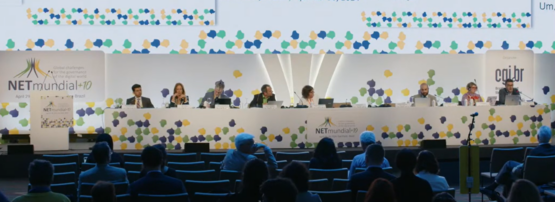
There have been some positive reviews about NETmundial+10 recently. APNIC participated in this process because it provided a unique opportunity to coordinate views from a wide range of stakeholders, especially the technical community. Furthermore, the context is crucial with the forthcoming intergovernmental negotiations at the UN on the Global Digital Compact (GDC) and the Summit of the Future this year, along with the WSIS+20 review scheduled for next year.
NETmundial+10 assessed the current state of Internet governance and reflected on its future applications. This assessment came just before the UN started negotiations on matters affecting Internet governance, where non-governmental stakeholders are excluded from the decision-making process.
The Brazilian Internet Steering Committee (CGI.br), renowned for its multistakeholder approach, demonstrated good timing by initiating an effort from the Global South. They gathered a diverse group of stakeholders to participate in producing a statement after conducting broad consultations. CGI.br created NetMundial as a unique initiative that achieved consensus on important governance principles since the original meeting in 2014. Back then, the NetMundial effort helped build momentum for the crucial IANA stewardship transition process.
APNIC has been an active part of the technical community for over 30 years. As an organization, we proudly consider ourselves part of the World Summit of the Information Society (WSIS) generation and celebrate the values and opportunities that WSIS has brought. WSIS has helped many organizations similar to APNIC define their role in Internet governance more clearly, and their role in a decentralized and ever-evolving ecosystem, which now forms the institutional backbone of the Internet.
NETmundial has worked well as a WSIS ‘pit stop’ to reflect on the importance of WSIS — when it agreed and promoted a set of principles and a roadmap to guide the evolution of Internet cooperation and governance.
NETmundial’s second pit stop, 10 years later, pragmatically and quickly produced an output document ‘Strengthening Internet governance and digital policy processes‘, which reaffirmed the original principles and offered guidelines for its implementation. It also laid the groundwork for future-proofing these processes, anticipating the increasing challenges and decreasing inclusivity of digital governance discussions within the UN’s intergovernmental decision-making framework.
Reflecting on what does and doesn’t work in Internet governance, Jovan Kurbalija proposed a ‘Bauhaus test’ in his recent review of NETmundial.
In the practical way of avoiding duplication, one could use some sort of ‘Bauhaus test’ by checking if ‘form follows functions’: whether the new bodies and organisation are needed to, for example, perform functions of ethical AI developments, avoid tech monopolies, or whatever else society considers a priority function.
São Paulo Multistakeholder Guidelines: A breath of fresh air into digital governance debates, Jovan Kurbalija, 2 May 2024.
This quick pit stop worked very well to gather a diverse group (through consultations online and onsite) of people and discuss their diverse views. NETmundial+10 was able to aggregate most of these views in an executive and expedited manner, with a concrete and well-agreed outcome.
The outcomes of NETmundial+10 should be considered valuable input to ongoing Internet governance conversations at the international level. It reaffirms high-level principles, offers guidance for their implementation, offers recommendations on current challenges, and provides input on strengthening the IGF, as well as some considerations for the Global Digital Compact and the WSIS+20 review.
Moving forward
Regarding input to ongoing processes, there are three key points worth mentioning.
Firstly, the UN Global Digital Compact and the Summit of the Future may or may not signify an attempt by the UN to begin a generational shift 20 years after WSIS. This shift would involve not only updating policy frameworks but also restructuring how various UN agencies are assigned responsibilities for different themes and follow-up actions. While replicating or substituting the unique WSIS process will be challenging, it would be a mistake to disregard WSIS without fully embracing its legacy of knowledge. As highlighted during NETmundial+10, the goal should not be to create a generational gap, but to bridge it.
NETmundial+10 also recognized that WSIS remains relevant through the Internet Governance Forum (IGF). The IGF serves as the repository of historical knowledge, is anchored in the WSIS generation, and is the platform where the Internet governance agenda was established and has evolved. As emphasized during NETmundial+10, all stakeholder groups should ‘lean in’ to the IGF, both in terms of financial support and active participation.
Finally, regarding coordination, NETmundial+10 acknowledged that effective coordination is expensive, requiring a significant investment of both time and resources. At the heart of WSIS lies its commitment to inclusivity and its focus on development. Before creating new processes or adding complexity, we should consider the costs of coordination and participation, including those at national and regional levels. To maintain inclusivity, we should avoid duplication and unnecessary complexity, focusing instead on maximizing the potential of existing processes. In summary, we should work towards ‘compacting processes’ rather than ‘expanding’ them.
The views expressed by the authors of this blog are their own and do not necessarily reflect the views of APNIC. Please note a Code of Conduct applies to this blog.
